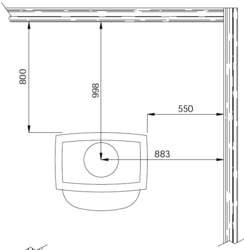Hi,
Jotul F8 has 200 mm back clearance requirement and a 600 mm side clearance requirement. If I set up my Jotul 210 mm from the back wall I am OK, but if 400 mm along that back wall (which is parallel to the back of the heater) there is a timber stud, am I then in breach of the side clearance? or is the side clearance does not relate to the back wall?
Similarly, if I need a 600 mm side clearance, does it mean that the hearth needs to extend 600 mm to both sides so that the floorboards are not closer to the heater than 600 mm>
Sorry, this must be a naive question, but I am a newbie.
Thanks
Jotul F8 has 200 mm back clearance requirement and a 600 mm side clearance requirement. If I set up my Jotul 210 mm from the back wall I am OK, but if 400 mm along that back wall (which is parallel to the back of the heater) there is a timber stud, am I then in breach of the side clearance? or is the side clearance does not relate to the back wall?
Similarly, if I need a 600 mm side clearance, does it mean that the hearth needs to extend 600 mm to both sides so that the floorboards are not closer to the heater than 600 mm>
Sorry, this must be a naive question, but I am a newbie.
Thanks



 , even though it is just over min distance from the stove and stove pipe. So, in my case, there is no heat to retain and even if it was hot, the mass is so little, it will be meaningless.
, even though it is just over min distance from the stove and stove pipe. So, in my case, there is no heat to retain and even if it was hot, the mass is so little, it will be meaningless.